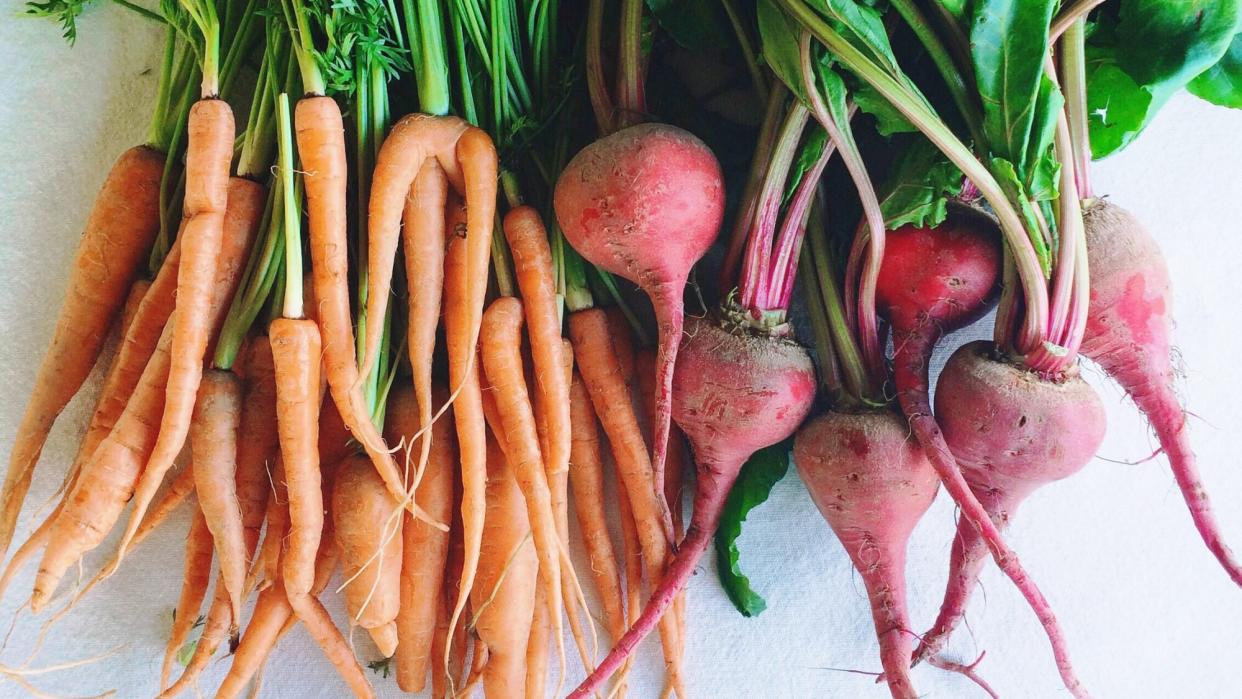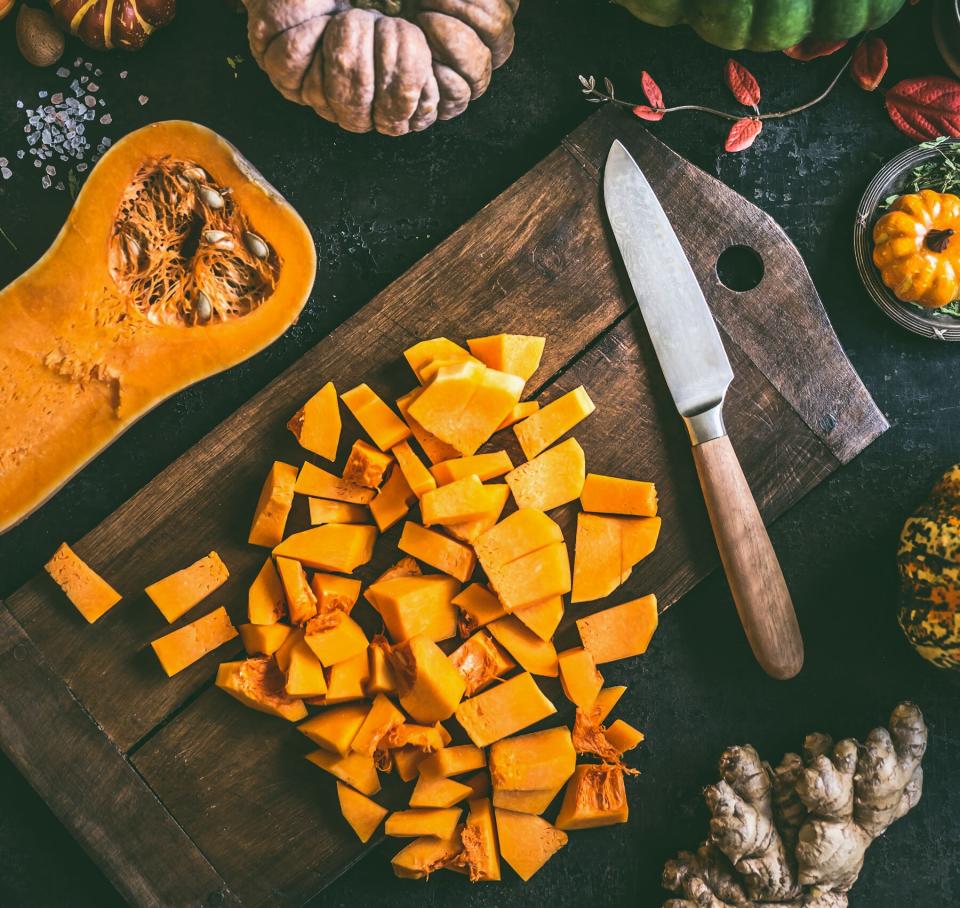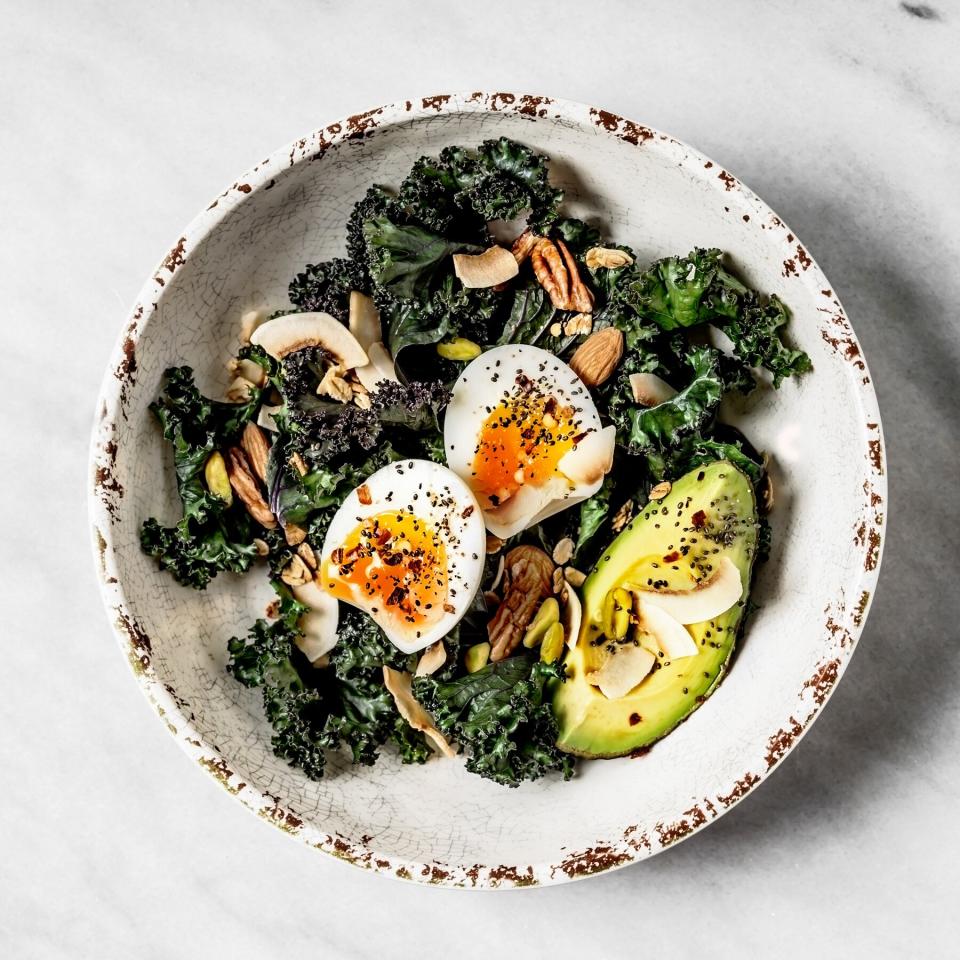How to Eat Seasonally All Winter Long

Getty Images
We tend to think of summer as the time to dive into seasonal produce: farmers' markets flourish, roadside produce stands pop up across the country, and grocery stores are lush with the bounty of the peak growing season. Eating seasonally, which means packing your plate with food grown naturally at that time of year in your region, is renowned for being especially nutrient-dense, extra flavorful, cost efficient, and environmentally friendly.
The benefits of eating seasonally don't have to end when you pull out winter clothes from storage. There are plenty of colorful, nutritious fruits and vegetables that thrive in the cooler months, or are harvested in the fall and maintain their flavor and health benefits throughout the winter. It just takes knowing where and what to look for. Read this, and you'll be on the path to eating seasonally all year round.
RELATED: Is It Better to Buy Local or Organic Produce?
Buying Local
One of the easiest ways to ensure you're eating in season is to buy local produce, meaning purchasing directly from farms in your area. The fact that the only journey local produce has to take is from the field to your table has many associated benefits. It means that your fruit and vegetables are picked at peak ripeness—rather than picked early and allowed to ripen enroute—when both nutrient density and flavor are at their best. This super-fresh produce also lasts longer in your fridge or countertop before spoiling, has a lower environmental impact (minimal transport and packaging), and supports your local economy. Many local producers set up winter farm stands or cold-season community supported agriculture (CSA) subscription models. In urban areas, you often find winter farmers' markets with a array of vibrant, diverse produce to stock your kitchen.
Seasonal Winter Produce
Even without access to local farms, you can find plenty of seasonal produce in the grocery store throughout the colder months. Depending on your market, you may even find locally grown wares. While seasonal produce depends largely on where you live (California, we are all jealous of your year-round bounty), there are plenty of fruits and veggies available across the country that are at their peak during winter.
RELATED: 31 Easy Slow Cooker Recipes for When You're Craving Comfort Food
Winter Squash
The name says it all: Winter squash is the quintessential seasonal ingredient. This category includes varieties of hard-skinned squash—such as acorn, butternut, kabocha, butternut, and delicata—that are harvested in the fall, and can be stored and eaten all through the cooler months.
Winter squash are incredibly versatile, whether you choose to blend, roast, stuff, or bake them. Try out all the different types, as each squash is uniquely flavorful. (I mean, if you've never had crispy kabocha squash slices with maple syrup and sage, have you really lived?)
RELATED: 23 Delicious Squash Recipes You Can Cook in Any Season

Potatoes
As if we needed more reasons to love potatoes, everyone's favorite tubers are a great choice for eating seasonally in winter. Potatoes are readily available year-round due to how well they keep when stored properly. Typically, spuds are harvested in late fall but, depending on your climate, they may be fresh even in the middle of winter. Don't limit yourself to basic white and sweet—take advantage of the more than 200 varieties of taters grown across the U.S. Between the myriad types and cooking methods, potato possibilities are endless. If you need inspiration, try Horseradish potato gratin, Garlic roasted potatoes, or a Sweet potato risotto.

Citrus Fruits
It seems counterintuitive to think of bright, vibrant citrus as a winter fruit, but most citrus ripen to their sweetest from late fall to early spring. Unless you live in a temperate region, you'll likely not find them grown locally, but that doesn't mean you can't enjoy those vitamin C-rich, juicy treasures.
Classics like grapefruit and clementines are always a hit but, for a variety of tart and sweet treats, keep your eyes peeled for blood oranges, kumquats, and persimmons. In addition to making great snacks, citrus is perfect in a bright, light Every citrus salad or Citrus scallops and cauliflower rice.
RELATED: The Major Mistake You're Making With Citrus Fruits—Plus How to Buy and Store Them

Brassicas
The brassica family includes some of the most nutritious and versatile produce out there, including broccoli, cauliflower, cabbage, Brussels sprouts, and the lesser-known kohlrabi (which looks like an alien spaceship but tastes like a delicious variation of a broccoli stem). Brassicas shine when roasted to caramelization in the oven, thrown into stir fries, or sliced thinly in salads.
RELATED: Cabbage Is the Most Underrated Vegetable: Learn How to Braise It, Roast It, and More

Hearty Greens
Cooking greens like escarole, endive, and kale are at their best when grown at cooler temperatures—crisp, sweet, and not too bitter. Try them sautéed, braised, or as part of a hearty winter vegetarian meal mixed with grains, pesto, and a nutty crunch.
And think outside of the winter salad bowl: This Winter lentil soup recipe featuring kale and sweet potatoes is just what we're talking about.
RELATED: 6 Winter Salads Featuring In-Season Produce


